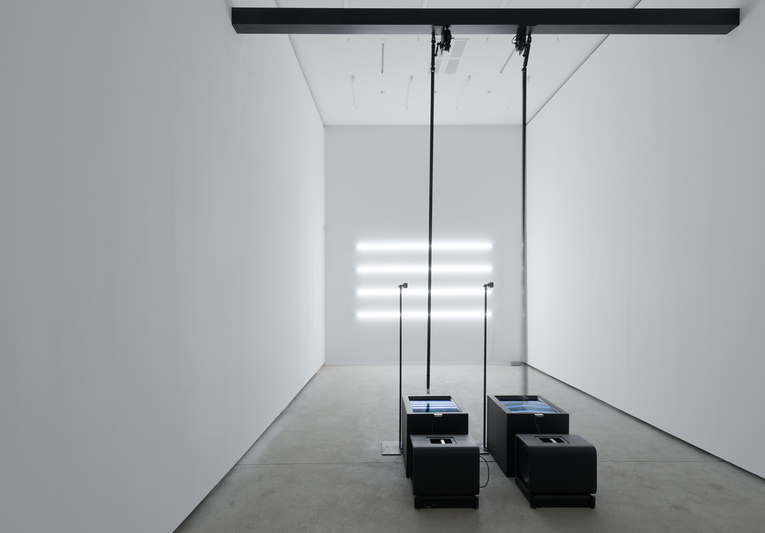17th Art Division Grand Prize
crt mgn
Media installation
Carsten NICOLAI [Germany]
Outline
Four neon tubes are mounted horizontally and equidistant from each other on the far wall of the gallery. Their light is picked up by a video camera and transmi t ted onto a television screen. The image on the television is distor ted by a swinging magnet at tached to a pendulum passing over the screen with an indeterminate frequency. The swinging magnet emits a magnetic field that is picked up by an antenna attached to the television. The antenna serves as a magnetic field analyzer and is connected to a sound system. The fluctuations of the magnet ic f i e ld produce modulations that are translated into acoustic signals audible during the exhibition. The magnetic field of the television is influenced in a way that causes the image to shift and its colours and shapes to be distor ted, creating a potential ly endless unfolding display of form and colour.
Reason for Award
While a famous artist who exhibits at art museums worldwide taking the Grand Prize might seem unsurprising, crt mgn wins for being an unparalleled masterpiece buildingon media history. The idea came at a concert organized by the Watari Museum of Contemporary Ar t in Tokyo, in memory of video art pioneer, Nam June PAIK, who haddied the previous year. Carsten NICOLAI makes experimental music and innovative artworks that explore space, light and sound out of his interests in nature and science.crt mgn transmits luminescent neon tubes onto a monitor, where the arbitrarily fluctuations caused by a magnet act on electromagnetic waves and produce subtle sounds.It creates beautiful and variable imagery, evoking PAIK’s work which used TV as a medium. This poetic installation through systematic, sharp and refined spatial configuration links media’s past and present, and the visual and the auditory: A wonderful artwork in which you sense deep love for a predecessor. (OKABE Aomi)



